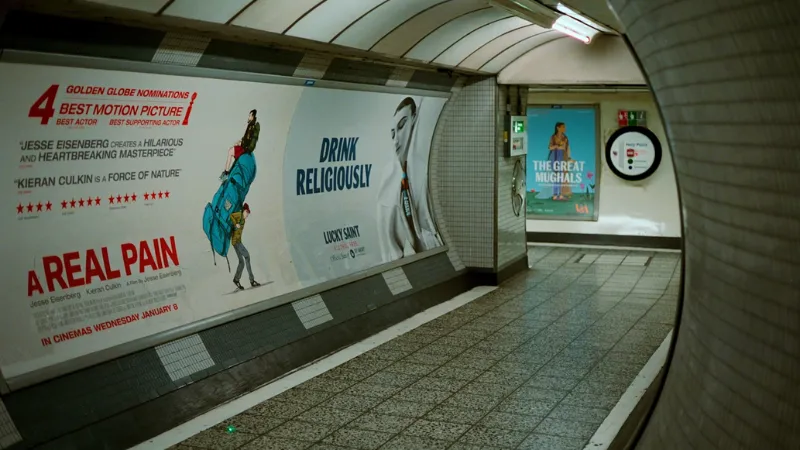The Fast-Changing Business Landscape: Lessons for Modern Companies
Oct 21, 2025 | By Team SR

It feels like the ground is shifting beneath our feet, doesn’t it? Just a decade ago, a tech company was a specific kind of firm in Silicon Valley. Today, every company, from your local bakery using Instagram to a multinational manufacturer deploying AI, is a tech company. The pace of change isn't just accelerating; it's become the very medium in which we operate.
For leaders and teams, this can feel exhausting. The playbook from five years ago is often obsolete. The competitors you knew about are being side-swiped by startups you've never heard of. But within this chaos lies an incredible opportunity. The companies that are thriving aren’t just the ones with the best product; they're the ones with the most adaptable DNA. They've learned that in a hurricane, you can't be a mighty oak; you have to be a flexible reed.
Lesson 1: Agility Isn't a Buzzword; It's Your Lifeline
Remember the days of the five-year strategic plan? It was a beautiful, color-coded document that sat on a shelf, gathering dust while the real world rendered it irrelevant. Today, strategy is a living, breathing thing. The lesson is clear: rigidity is risk. Agility is your primary defense.
This doesn't mean a lack of vision. It means building a company that can pivot its tactics without losing sight of its North Star. It’s about creating feedback loops so tight that you can learn and adjust in real-time.
What does this look like in practice?
- Cross-Functional ‘Squads’: Instead of siloed departments, companies are forming small, mission-oriented teams with all the skills needed to see a project through, from design to marketing to engineering. This breaks down bureaucracy and speeds up decision-making.
- The Fail Fast Mentality: This has been misrepresented as celebrating failure. It's not. It's about creating a culture where small, calculated experiments are encouraged. The goal is to learn what doesn't work quickly and cheaply, so you can redirect resources to what does.
- Continuous Feedback over Annual Reviews: Waiting a year to tell an employee how they're doing is like a navigator giving a ship's captain a course correction from six months ago. Regular check-ins, peer feedback, and real-time customer data are the new norm for steering the ship.
Lesson 2: The Customer Holds the Remote Control
Power has decisively shifted to the customer. They have infinite choice, perfect information at their fingertips, and a global platform to share their praise or grievances. The companies that understand this treat customer experience not as a department, but as the entire company's purpose.
The old model was: Here is our product. We hope you like it. The new model is: Tell us what you need, and we will build it with you.
Key shifts in customer-centricity
- From Transactional to Relational: The goal is no longer a single sale. It's building a lifelong relationship. This means engaging with customers on their terms, providing value beyond the product (through content, community, etc.), and creating emotional loyalty.
- Personalization at Scale: Customers now expect Amazon and Netflix-level personalization in every interaction. They don't want to be just another number in your database. Using data ethically to tailor experiences is no longer a luxury; it's the price of entry.
- Proactive, Not Reactive, Support: The best companies don't wait for a customer to have a problem. They use data and monitoring to identify and solve issues before the customer even notices. This builds incredible trust.
| The ‘then’ model | The ‘now’ model |
| One-way marketing (TV, Radio) | Two-way conversation (Social Media, Chat) |
| Generic mass messaging | Hyper-personalized communication |
| Solving problems when complaints happen | Anticipating and preventing problems |
| Customer as a revenue source | Customer as a partner and co-creator |
Lesson 3: Weaving the Threads into a Cohesive Whole
Agility and customer obsession are powerful, but they must be supported by a strong foundation. This is where the real work begins, integrating these principles into the very fabric of your organization to create truly future-proof business operations, which is about a fundamental rewiring of how the company thinks and acts. The goal is to build a resilient organization, not just efficient, one that can adapt to shifts without breaking.
This integrated approach relies on two critical elements: using data as a compass and empowering your people as the engine.

RECOMMENDED FOR YOU

Dubai PropTech Startup Knocknock Debuts Mobile App with Global Growth Strategy
Team SR
Apr 25, 2025
Lesson 4: Data is the Compass (But Humans Still Steer the Ship)
We're swimming in data. Every click, purchase, support ticket, and social media post generates a digital footprint. The lesson here is twofold: First, you must learn to read this compass. Second, you must remember that data informs decisions; it doesn't make them.
Intuition and experience still matter, but now they are guided by a torrent of empirical evidence. A gut feeling is powerful; a gut feeling backed by a dataset showing a clear trend is unstoppable.
How to balance data and humanity:
- Ask the Right Questions: Don't just dive into the data ocean hoping to find a treasure chest. Start with a business question: Why are customers abandoning their carts? Or what content drives the most engagement? Let the questions guide your analysis.
- Cultivate Data Literacy: This isn't just for the data science team. Every department, from HR to marketing, needs a basic understanding of how to interpret data relevant to their work.
- Remember the Why Behind the What: Data can tell you what is happening, but it often can't tell you why. A sudden drop in sales is a data point. Understanding the why requires talking to customers, understanding market sentiment, and applying human empathy.
Lesson 5: Your People Are Your Innovation Engine
You can have the best technology and the most sophisticated data models, but if your team is disengaged, fearful, or burnt out, you will lose. The most adaptable asset any company has is its people. The lesson is that culture is not a soft, HR thing. It is the hard, operational engine of innovation and resilience.
Pillars of a modern, adaptive culture
- Psychological Safety: This is the foundation. Team members must feel safe to take risks, voice opinions, and admit mistakes without fear of punishment or embarrassment. This is where true creativity and problem-solving flourish.
- A Learning Mindset: The skills needed for tomorrow's jobs may not even exist today. Companies must invest heavily in upskilling and reskilling their workforce. This means creating time and space for learning, not just treating it as an extracurricular activity.
- Purpose and Meaning: People, especially newer generations in the workforce, want to know that their work matters. They want to connect their daily tasks to a larger mission. A company that can articulate and live its why will attract and retain the best talent.
Ultimately, the goal is to weave all these lessons: agility, customer-centricity, data-informed strategy, and human-centric culture, into a single, resilient tapestry. It's about building an organization that is so fluid and robust that it can withstand whatever shock, disruption, or opportunity the market throws at it next. The landscape will keep changing, but the principles of adaptability, empathy, and resilience will forever be the keys to not just staying in the game but defining it.


 Follow us
Follow us Follow us
Follow us












